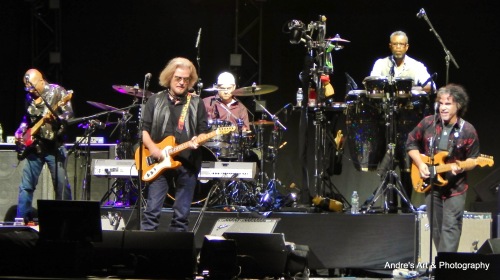
Cultural Reflections
“Miss Sharon Jones” an exceptional story
By Ron Wynn
Oscar-winning filmmaker Barbara Kopple’s newest documentary “Miss Sharon Jones” is an exceptional tale of triumph and perseverance in the face of recurring obstacles, as well as a chronicle of the way things work for independent musicians and bands in the 21st century. Jones and the Dap-Kings, a New York ensemble who’ve become quite popular on the neo-soul and contemporary R&B circuit despite never having any radio hits or selling large numbers of albums, are spotlighted during a key three-year period between 2013 and the present when they were trying to maintain momentum from previous acclaimed releases and tours. But during this time frame, Jones finds herself battling pancreatic cancer, enduring multiple procedures and having to take time away from recording and touring each time to rebuild her strength and regain her stamina. Simultaneously she battles guilt feelings over being the reason why her band members have to deal with layoffs and lost pay because she’s unable to work.
Kopple doesn’t sugarcoat or obscure any of the tough moments during Jones’ battles. The audience sees her occasionally discouraged, downcast and irritable, as well as pensive because she also is dealing with the recent loss of her mother and the fact that she never got to really see that her daughter did become a successful performer. Dismissed frequently for being too short, unattractive, even too dark, she didn’t even have her first LP released until she was 40. At one time she worked as a prison guard. Yet through all the struggles and despite the negative claims of some critics, she and the Dap-Kings persisted, and the band’s ultimate victories are seen late in the film as they appear on national and syndicated programs like “Ellen” and “The Tonight Show With Jimmy Fallon.”
The assistance of holistic nutrionist Megan Holken proves especially vital, as her efforts and those of manager Alex Kadvan and assistant manager Austen Holman help Jones maintain her spirit during the lowest moments. She also returns to her Augusta, Georgia hometown to relive old memories (both good and bad), do some fishing, and recall the impact that the great James Brown had on her. He was an inspiration and mentor, and she cites his message to her as among the things she always recalls in times of need.
The film also segues into other timely aspects of Jones’ life, among them an incredible performance that she gives at her church, where the spiritual side of her personality comes across just as vividly as the soul diva/R&B shouter side does in concert. The finale, a sold-out comeback concert at the Beacon Theatre, with Jones’ returning to her adopted New York home. She’s initially worried that she won’t be up to the challenge, but then shows in a decisive and memorable opening number that she’s not only back in form, but even more intense and determined to succeed.
Whether this earns Barbara Kopple a third Oscar win or not, “Miss Sharon Jones” is every bit as powerful and magnificent as anything she’s ever done, and a superb story about a singer and band who’s defied both professional and medical odds and won both times.


 Jazz Plus
Jazz Plus
















 Miles Ahead/Nina: Flawed but Fascinating
Miles Ahead/Nina: Flawed but Fascinating
